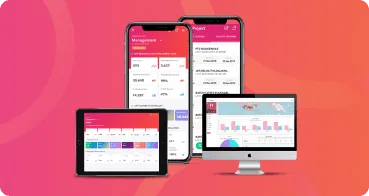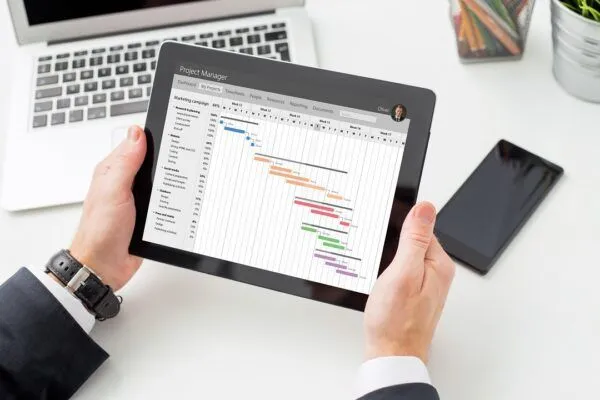Project management is a field that has a lot of terms to indicate the profession and elements of work in it.
Some terms may also be widely adapted for other fields, but some terms are also specific and only work when used in the realm of project management. Where, if you do not understand what these terms mean, of course you will encounter confusion and obstacles in your work.
For that, here we summarize 30 popular project management terms that you should know below!
1. Stakeholder
Stakeholders can be defined as a party that has an interest in a company. Their decisions can affect an agreement, activity, and the outcome of a project. Examples of stakeholders are sponsors, customers, and users, sellers, business partners, organizational groups, functional managers, government agencies, experts, consultants, project employees, to the community around the project environment.
2. Manajer Proyek (PM)
The project manager or project manager (PM) is the party who receives an offer from the project owner to lead the course of a project. He is in charge of implementing, coordinating, supervising, and controlling all work units so that the project is completed according to the agreement.
3. Construction Management (MK)
Construction Management (MK) is the representative or “right-hand man” of the PM. He is given the task of carrying out work in the field and assisted by other team members who have expertise in their respective fields. Usually, MK will be the party who is invited to discuss procedures and the resources that project needs after PM has confirmed an agreement with the project owner.
4. Architect
An architect is a person in charge of designing the macro to micro project built environment. Involved in a large construction project, the architect also acts as a director. So, he has the right to control the contractor working progress.
5. Structural Consultants
Structural consultants are arguably closely related to architects in a project. This is because the two of them will work together to make a building plan according to what the project owner wants. The specific task of a structural consultant is to design a structure in accordance with the wishes of the project owner through the main contractor, both upper and lower structures. He also considers things such as land conditions, building forms, building functions, land conditions, to geographical conditions.
6. Mechanical & Electrical Consultant (M&E)
Mechanical & Electrical Consultants (M&E) are the parties in charge of carrying out mechanical and electrical processes. In another sense, M&E is a person who plays a role as an implementer of work (workers) in a project that is being carried out, both those who are members of the mechanical and electrical members.
7. Quantity Surveyor (QS)
Quantity Surveyor (QS) is a term for representatives appointed by the project owner to work as supervisors. QS is also in charge of project finance controller. Thus, the utilization of the project budget does not deviate from the initial planning. In addition, QS is also in charge of making auction documents, contract documents (including Bills of Quantities), and job reports for payment of work progress.
8. Special Consultants
Another term in project management is Special Consultant. A special consultant is a party or someone who is appointed to prepare plans and directions for specific, special, or special tasks.
9. Projects
Project, of course you should know this project management term. A project is a one-time activity limited by budget, schedule, and quality, (triple constraint). In contrast to the general operational activities of the company, project activities have a special character that makes these two types of activities separate. The difference, among others, lies in the irregular nature of the project activities, the cycle is short, dynamic in nature, and consists of many jobs with fluctuating intensity.
10. Contract
A contract is a project management term that refers to the agreements made and agreed upon by the project owner and the contractor. In the contract, there are clauses that must be obeyed and implemented by all parties. If already bound in a contract, all parties may not violate or act deviating from the clauses in contact.
11. Contract Value
The contract value in project management terms is defined as the total amount or price agreed upon by the contract owner and the contractor. The contract price includes 10% VAT with the scope of work. The contract value will also be written in the agreement letter.
12. Budgeted Cost for Work Schedule (BCWS)
Budgeted Cost for Work Schedule (BCWS) or also known as Planned Value (PV) is a term in project management that refers to the amount of budget planned for a certain period based on the project work schedule to be implemented.
13. Budgeted Cost for Work Performed (BCWP)
Budgeted Cost for Work Performed (BCWP) or also known as Earned Value (EV) is a project management term for the amount of budget planned for a certain period based on the work that has been completed.
14. Actual Cost for Work Performed (ACWP)
Actual Cost for Work Performed (ACWP) is the project management term for the amount of actual costs incurred based on the work actually completed.
15. Field
Not referring to a large plot of land, the term field in project management is the place or location where the project takes place. The determination of the field is the result of the agreement between the project owner and the contractor.
16. Contractor
You will hear this one term very often in the realm of project management. A contractor is a person or party appointed by the contract owner to carry out the project in accordance with the agreed contractual agreement.
17. Tender
A tender is a project management term that refers to a formal bid to find a partner who bids a price, buys jobs, or provides goods and services.
18. Bills of Quantities (BQ)
Bills of Quantities (BQ) is a project management term to indicate a list of quantities containing the type of work, its volume, and the unit of measurement for all work items to be carried out. Usually, BQ is given to the Contractor as a complement to the tender documents. However, the Contractor may not need it because it depends on the auction system implemented by the auction committee.
19. Cost of Reserves (Contingency)
If the plan for use of BQ is not yet known, the list of costs will be saved as a Reserve Cost. The Reserve Fee of BQ will be reserved for work that may be in the future.
20. Provisional Quantity (PQ)
Provisional Quantity (PQ) is the project term for the volume that is in the BQ. PQ will be recalculated in accordance with the description of the implementation, but the unit price will be binding.
21. Curve S
In project management terms, the S curve is a mathematical graph depicting the cumulative data of a project. Such as the cost or duration of work time (man-hours) that have been used, or the percentage (%) of the time the work was completed. In general use, the S curve is used to measure the progress of project work, evaluate performance, and serve as a consideration for making cash flow estimates.
22. Lump Sum Contract
Lump Sum contract is a type of contract with a fixed contract price, neither the quantity nor the unit price changes. Changes may occur in the addition or reduction of the scope of work based on instructions from the PM or MK. Meanwhile, changes in budget size or contract price are unlikely to occur.
23. Contract Drawing
Contract Drawing is a project management term for an image that is used as a guide in making BQ. This BQ will be the benchmark for contractor bids in calculating additional equipment before running the project.
24. Implementation Overview
There is also an Implementation Description, which is the project management term for the drawings the Contractor receives during project implementation. This implementation description is also accompanied by instructions from the PM or CM if there is a revision regarding the addition or reduction of work approved by the Project Owner.
25. Work Drawing
Work Drawing is a term in project management for a detailed drawing made by a Contractor based on the Implementation Drawing requested by the PM or CM. The goal is to make it easier for contractors to identify what their work is.
26. As-Built Drawing
Another type of drawing in project management is As-Built Drawing. Implemented drawings are drawings made by the Contractor based on the actual work carried out in the field in accordance with the agreement.
27. Red Flags
The term Red Flags is important for you to know. In the realm of project management, red flags are a form of warning. This means that there is work that you and your team must fix. If the red flags have been given, you and your team must work together to solve problems and dare to express opinions.
28. Critical Path Method (CPM)
Furthermore, there is the term Critical Path Method (CPM) in project management. CPM is a method used to identify main tasks in a project. So, you and your team can complete it optimally and on time.
29. Baseline
Another project management term is Baseline. The baseline is needed to monitor and evaluate how deviated the progress of a project is in achieving the objectives from the initial planning. The baseline includes basic information such as scope, cost, and schedule in a project.
30. Earned Value (EV)
The last term is Earned Value (EV) or what is also called the Budgeted Cost of Work Performed (BCWP). EV itself is a budget spent in a project implementation. Earned Value calculation is needed for PM to monitor the suitability of project implementation in the field with the initial planning.
Find more insights about project management here with Tomps.id!








